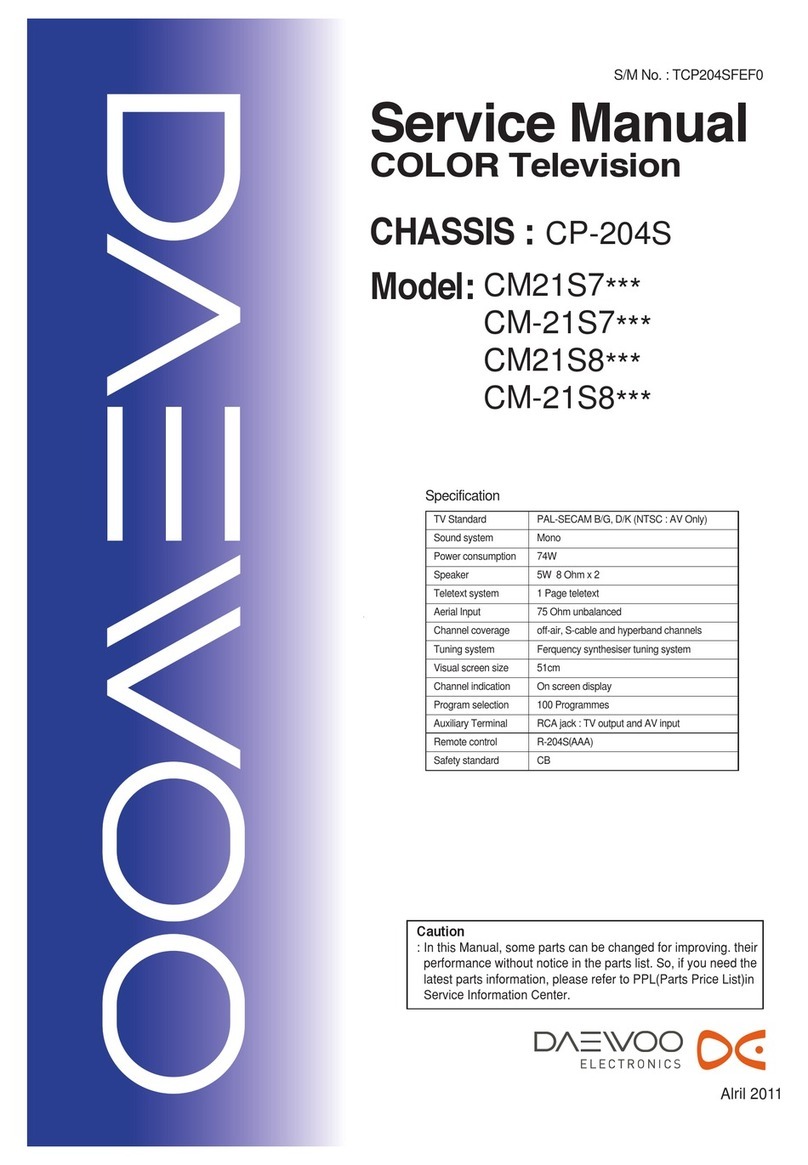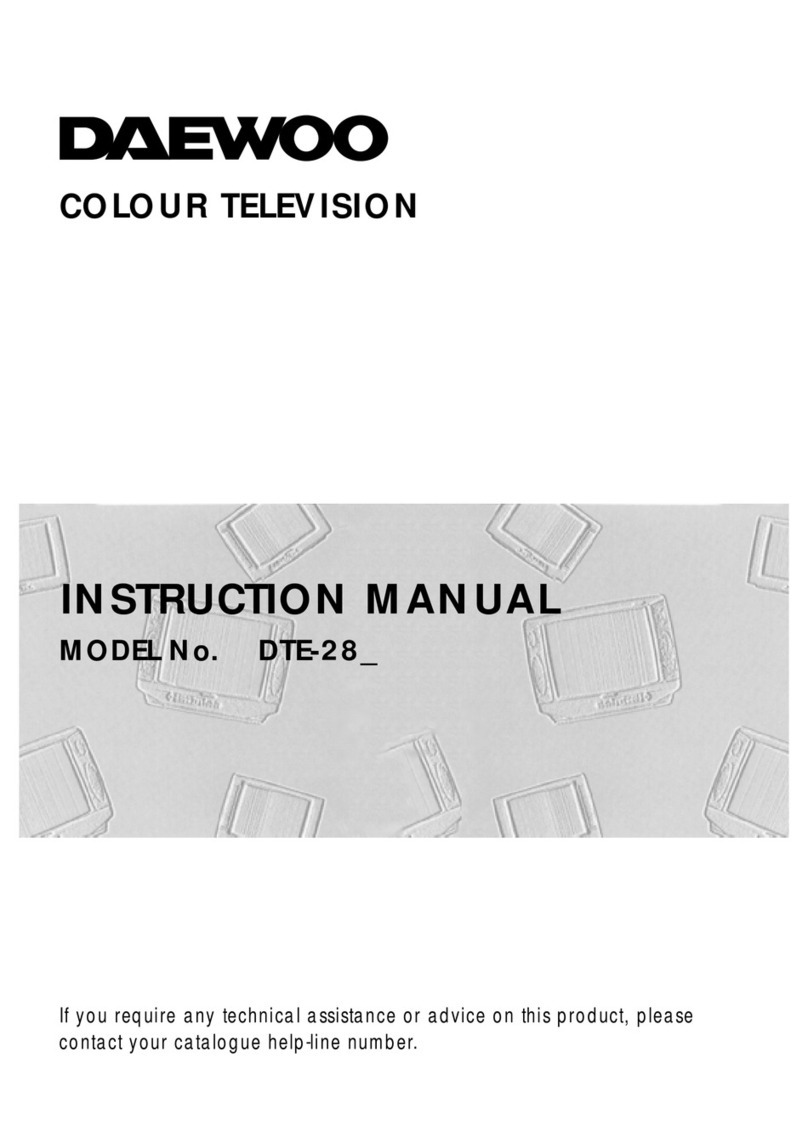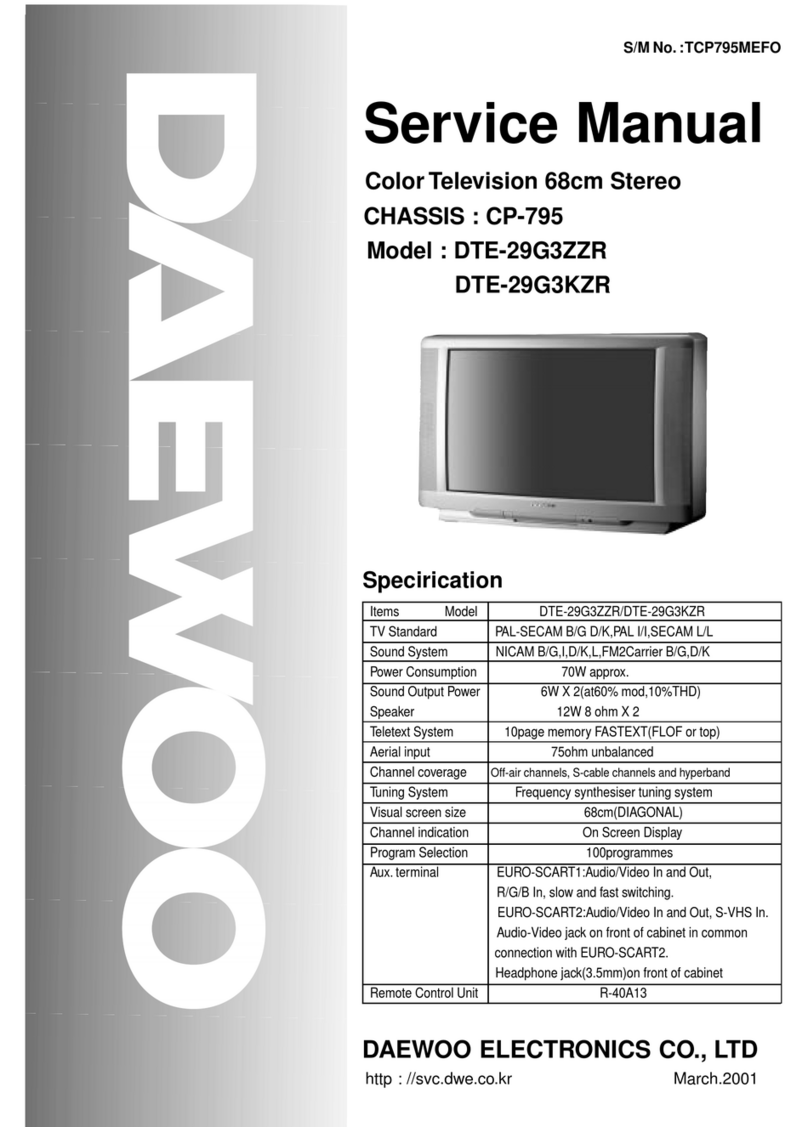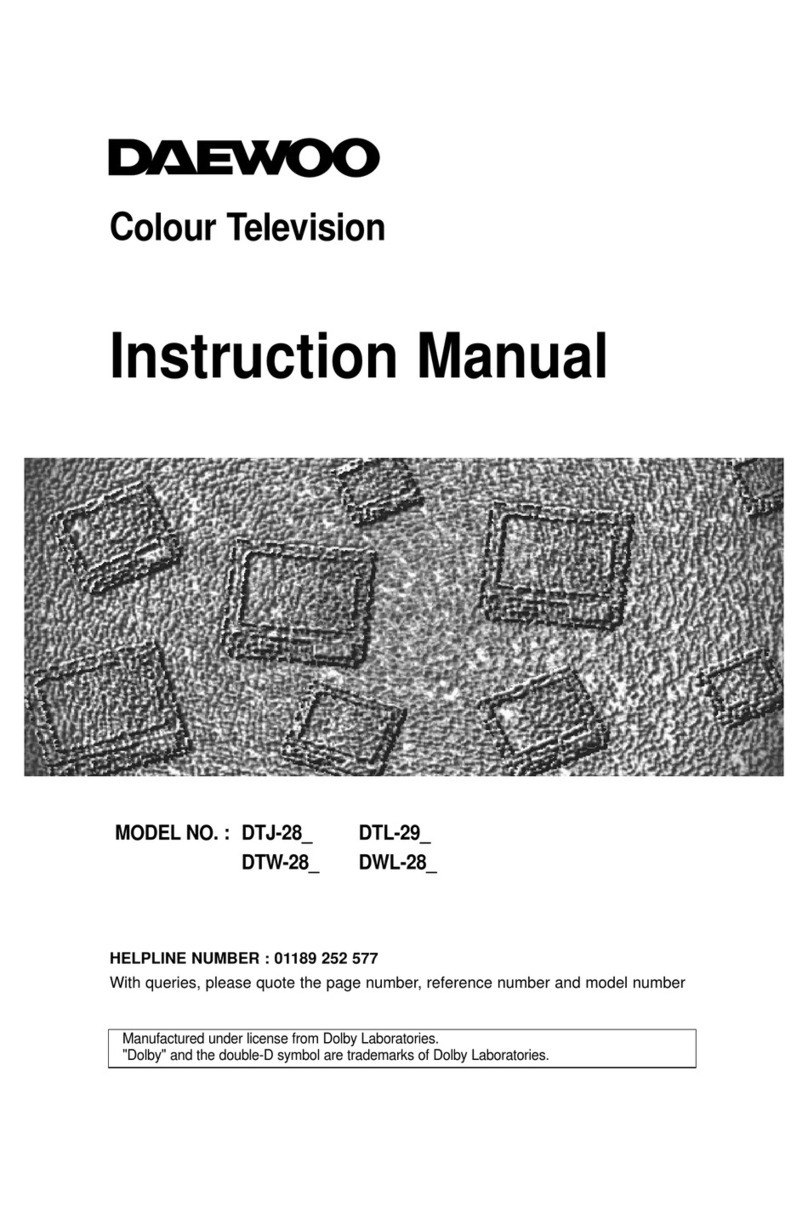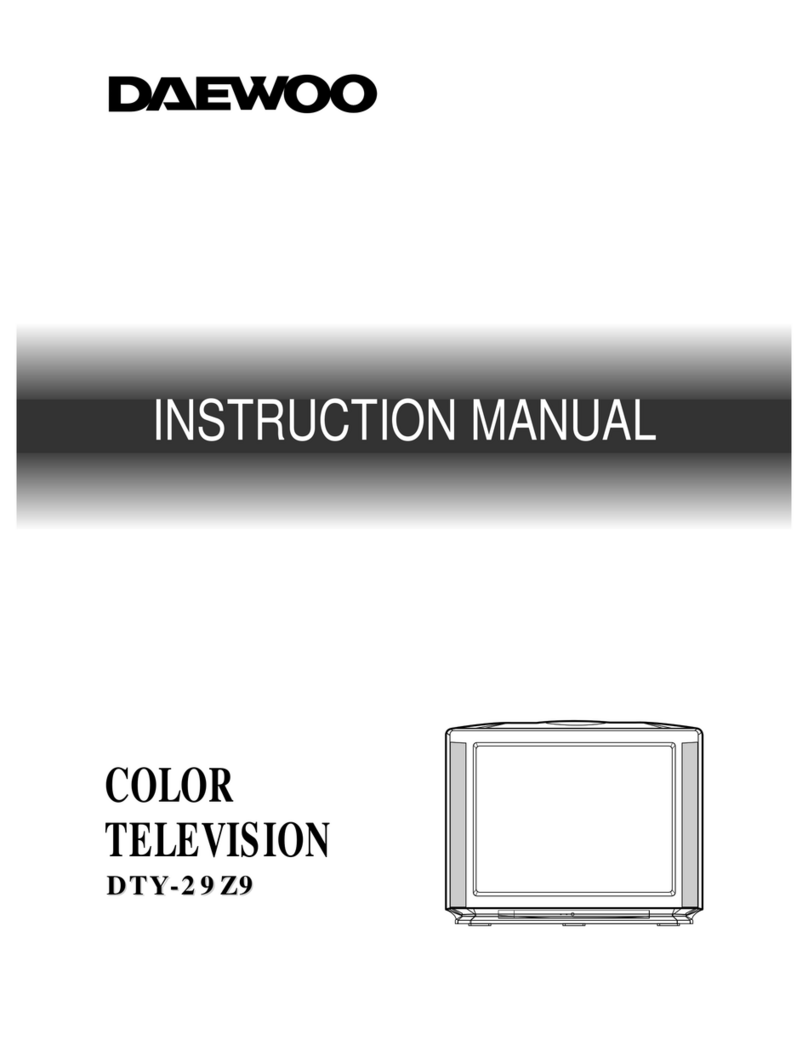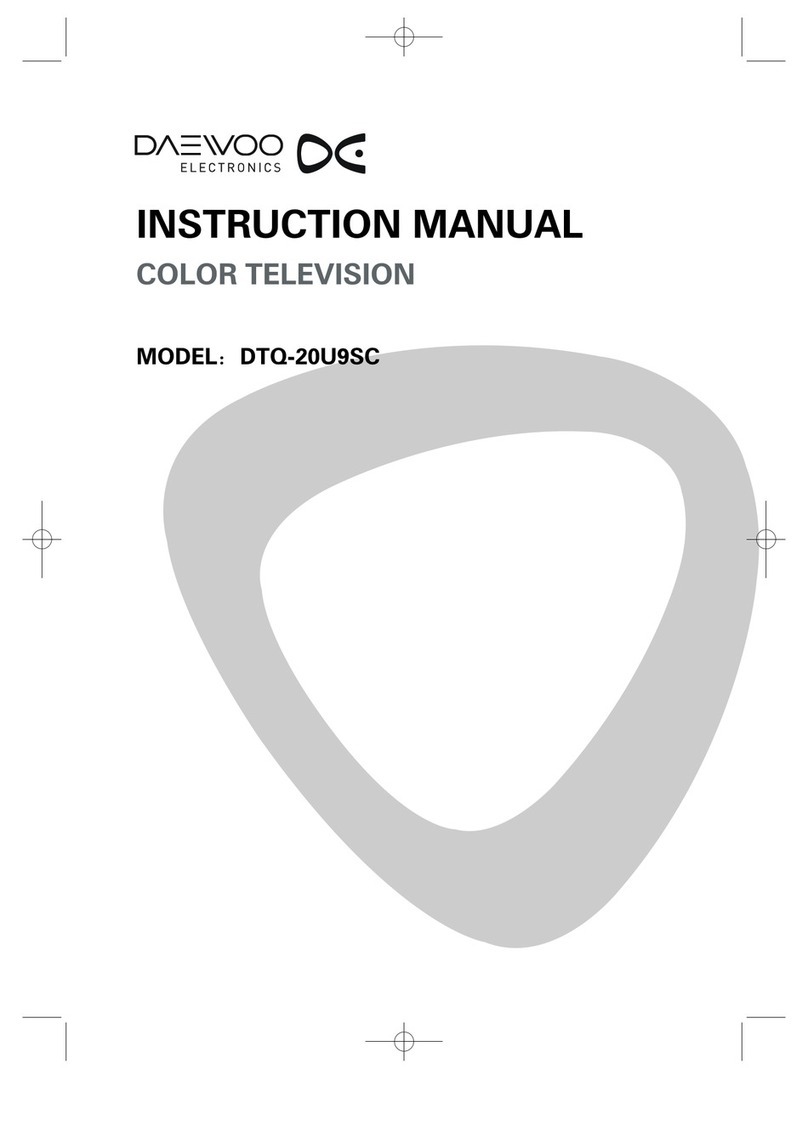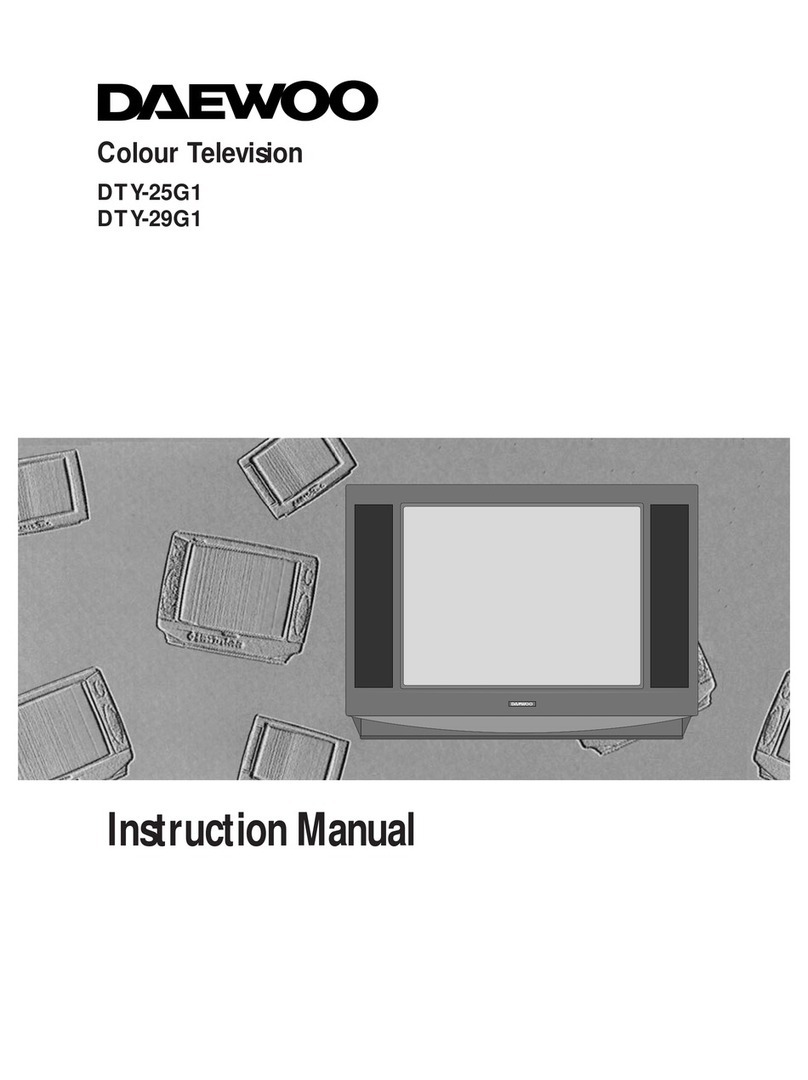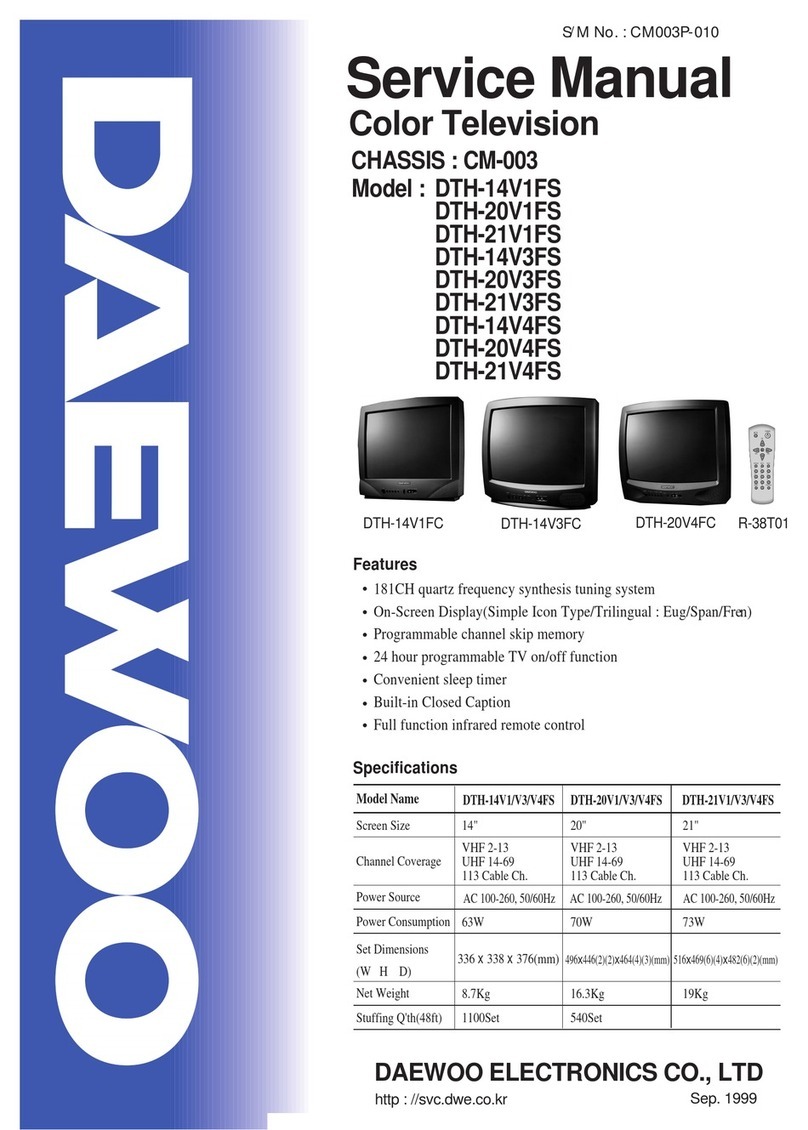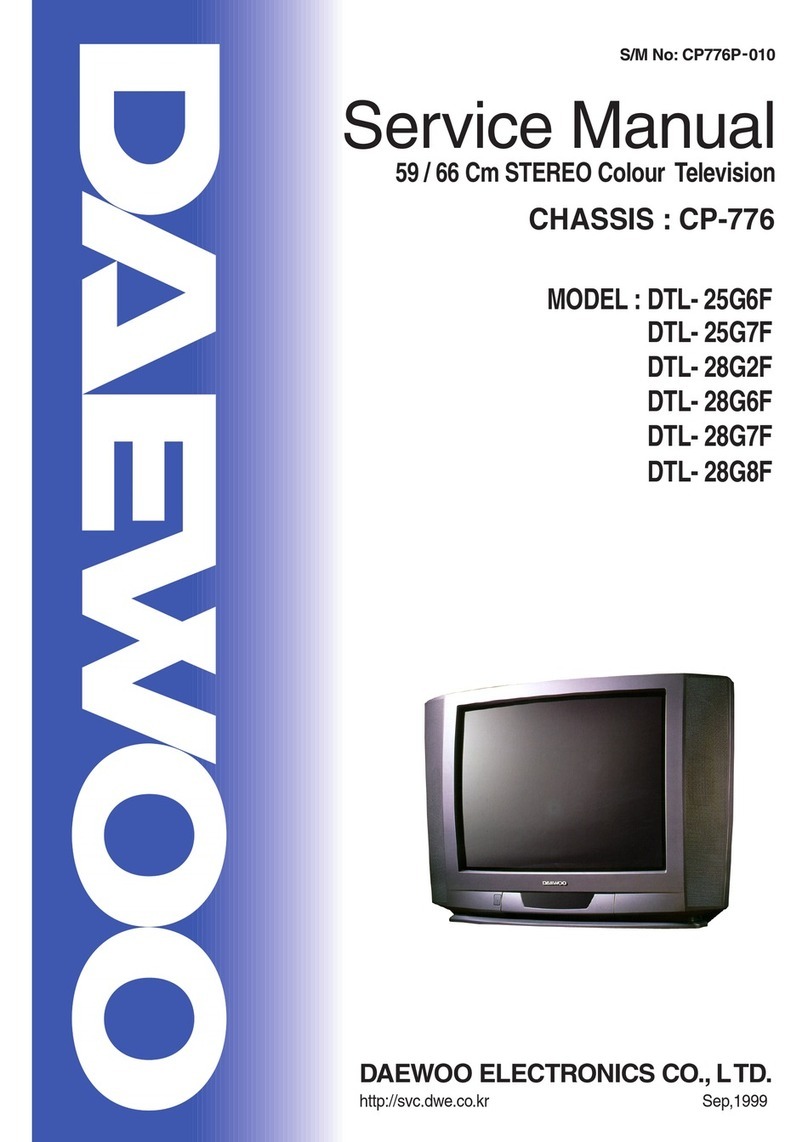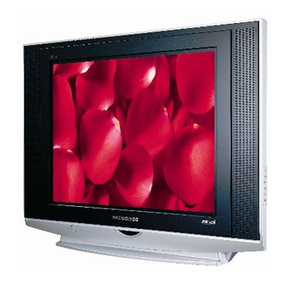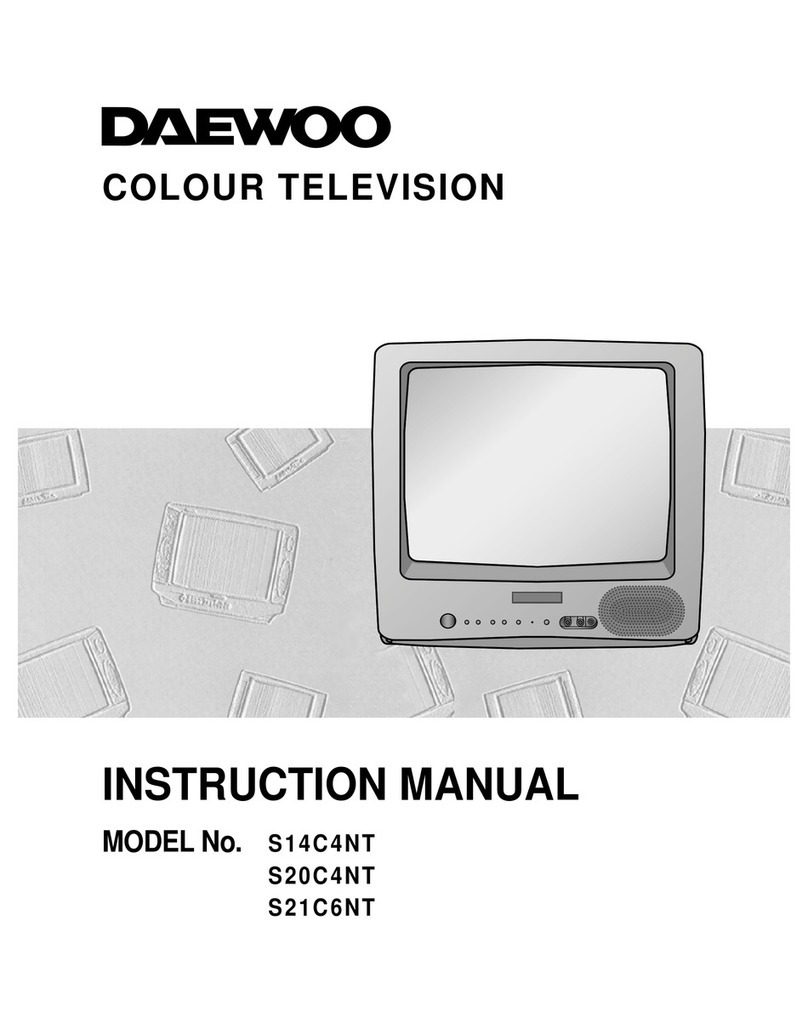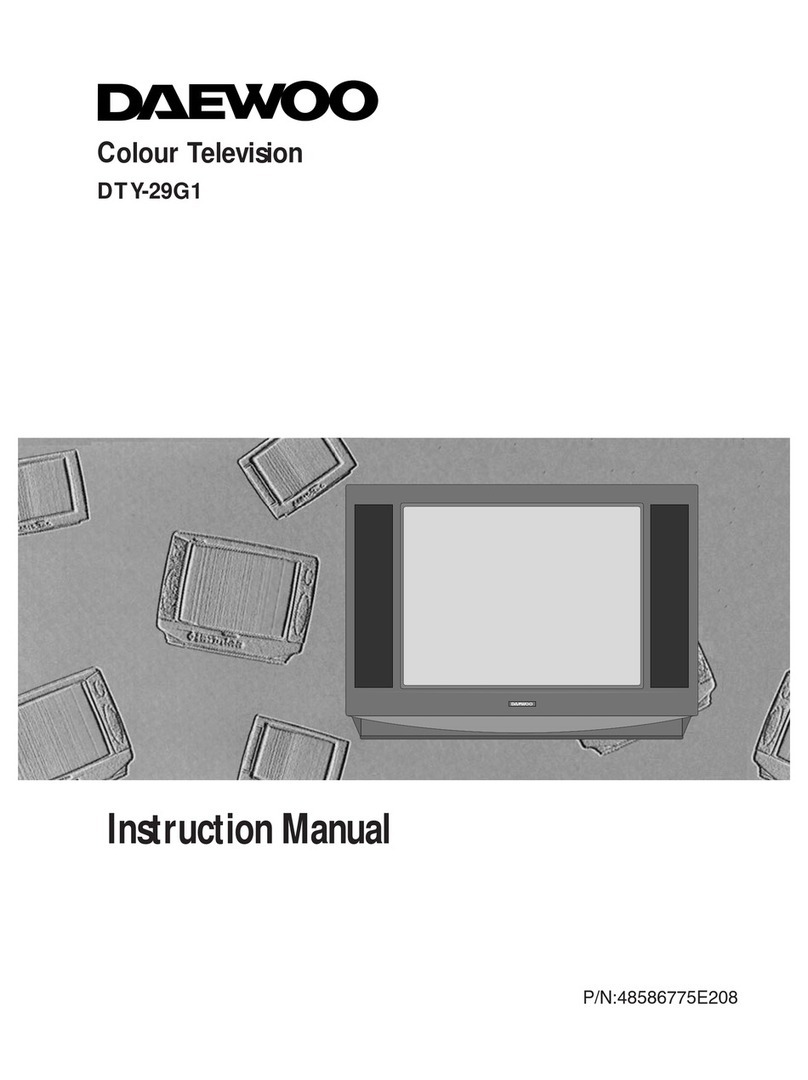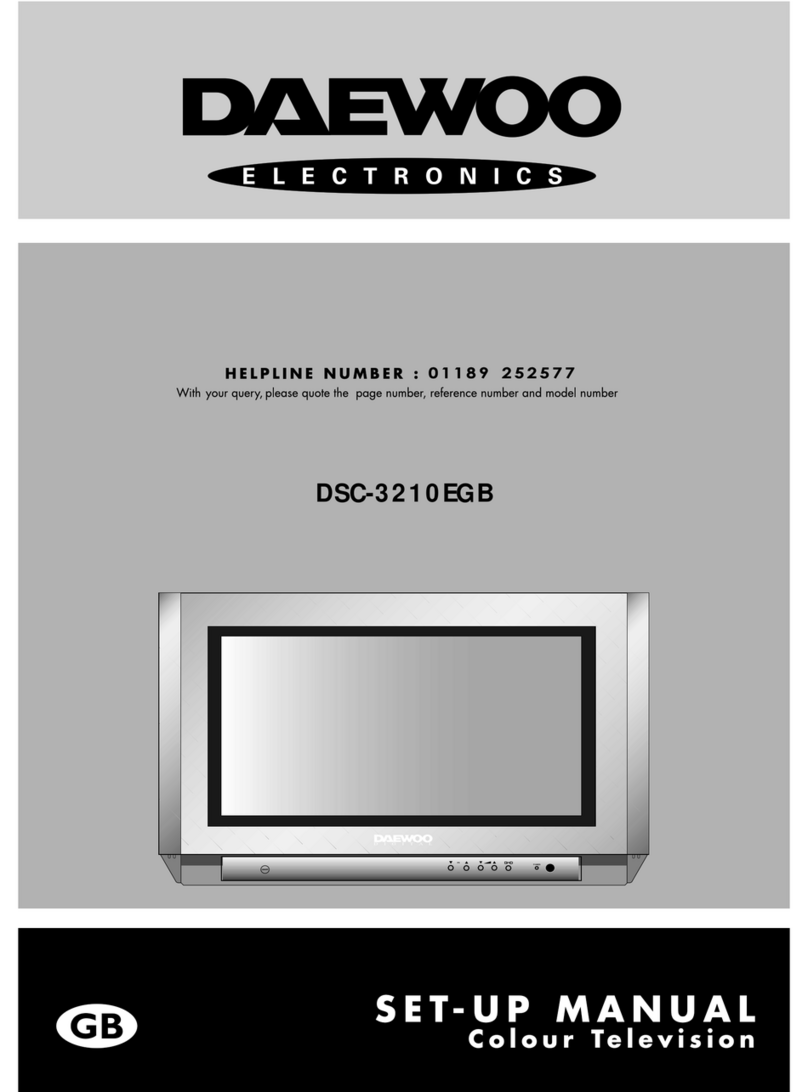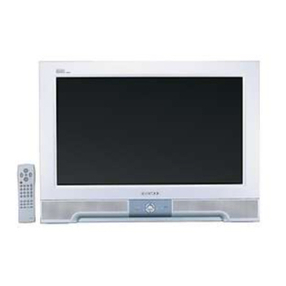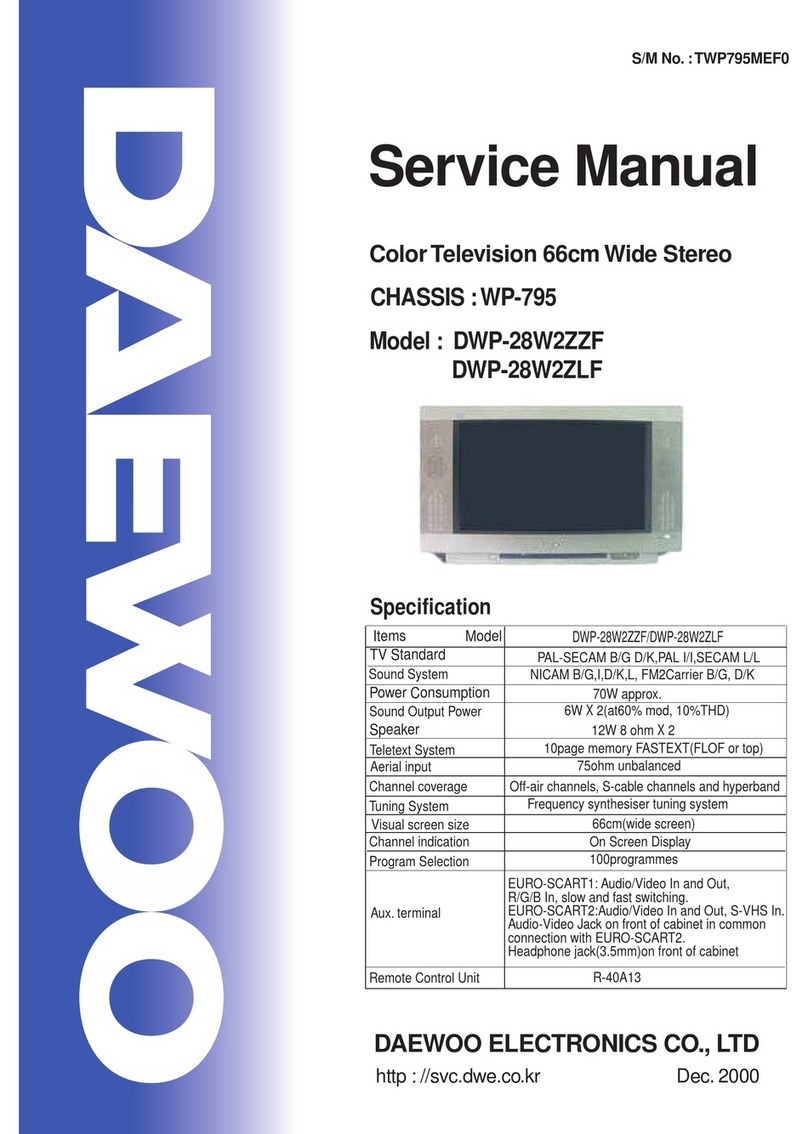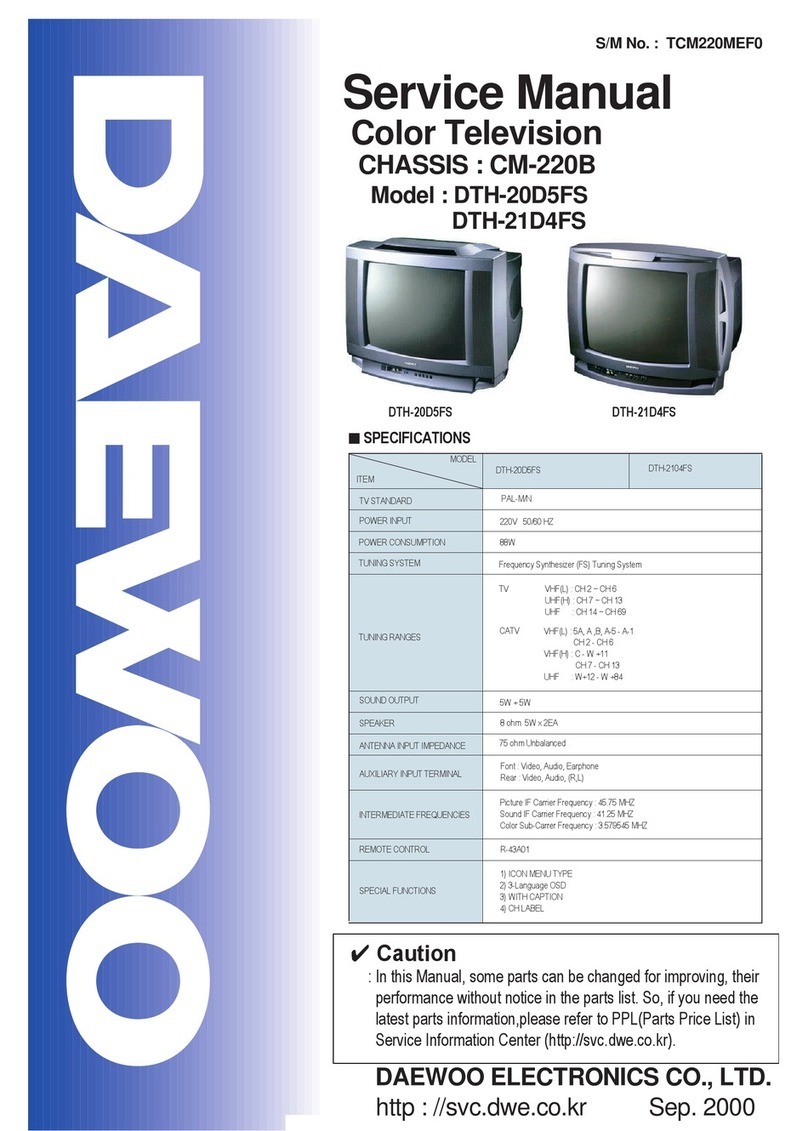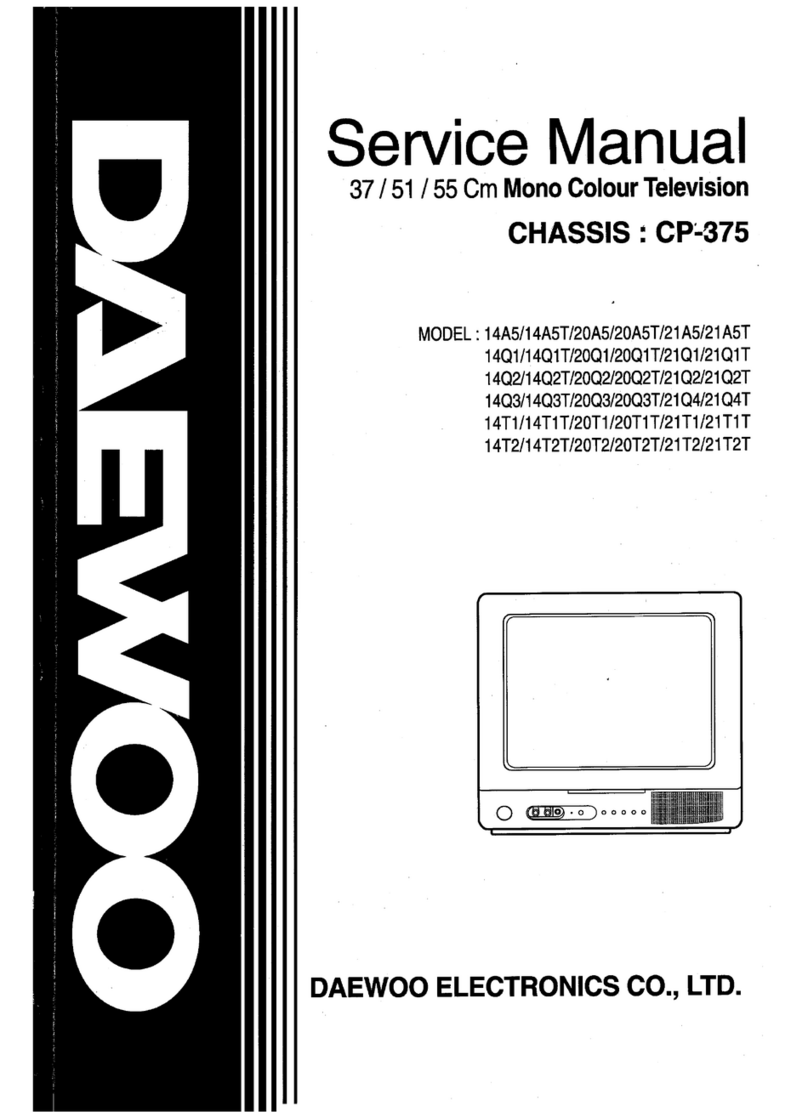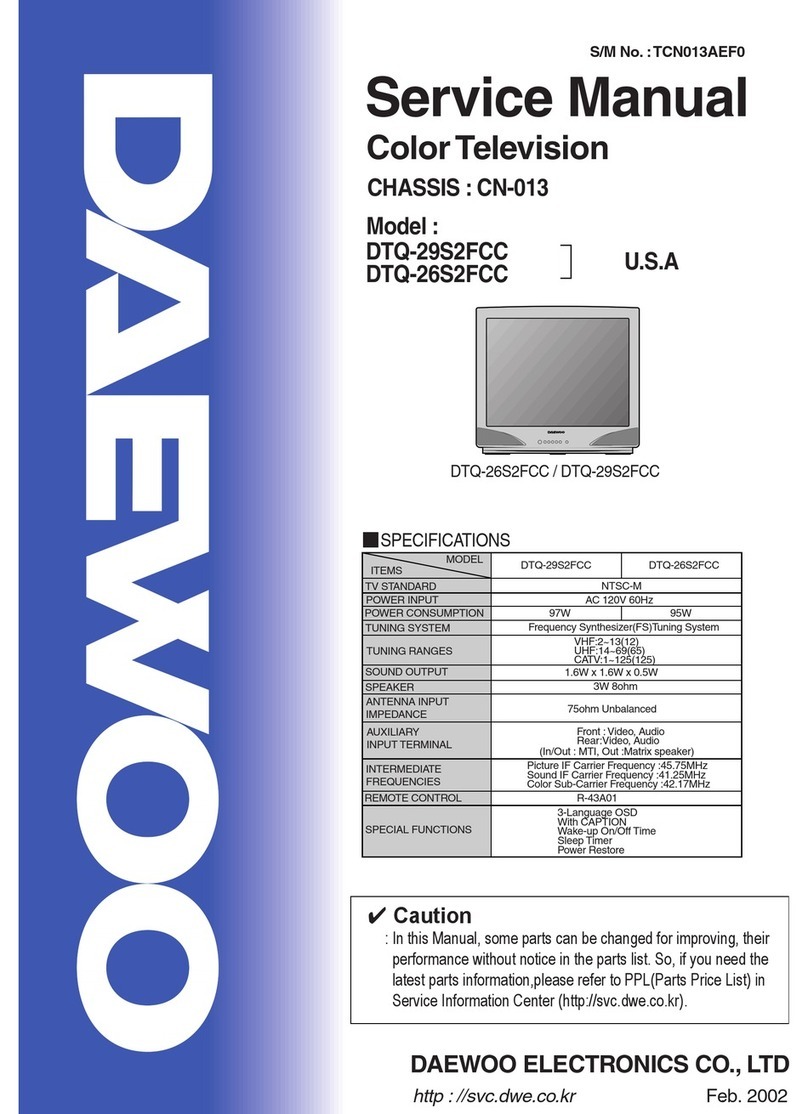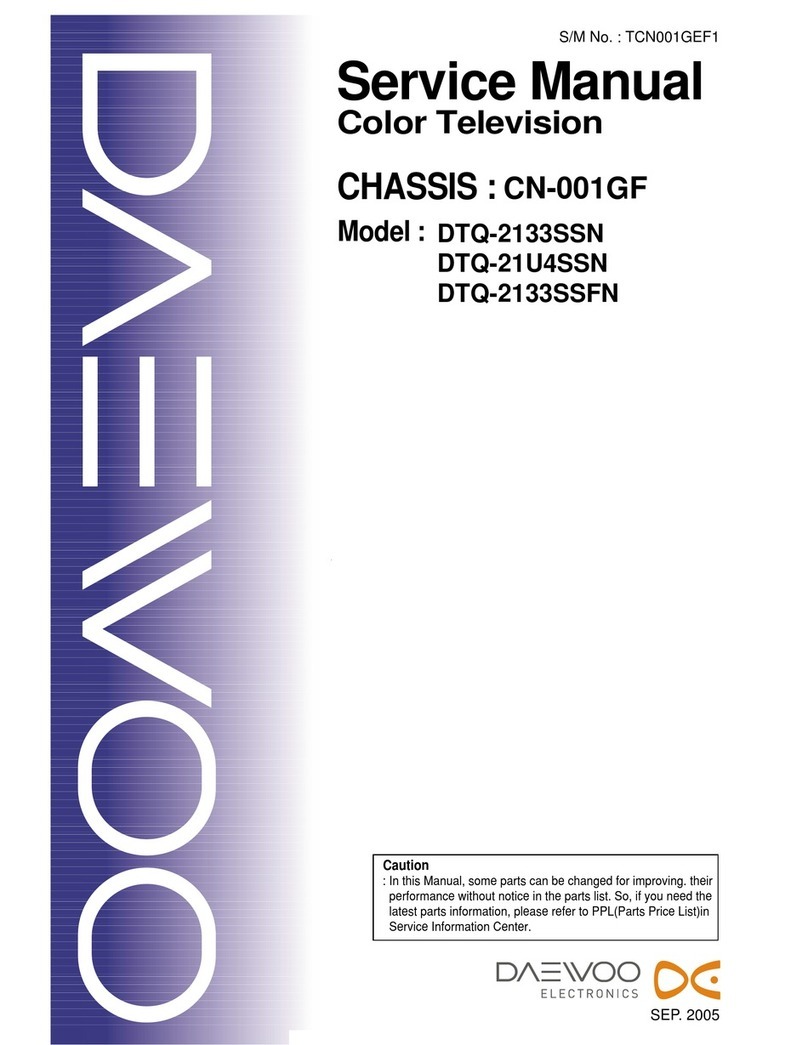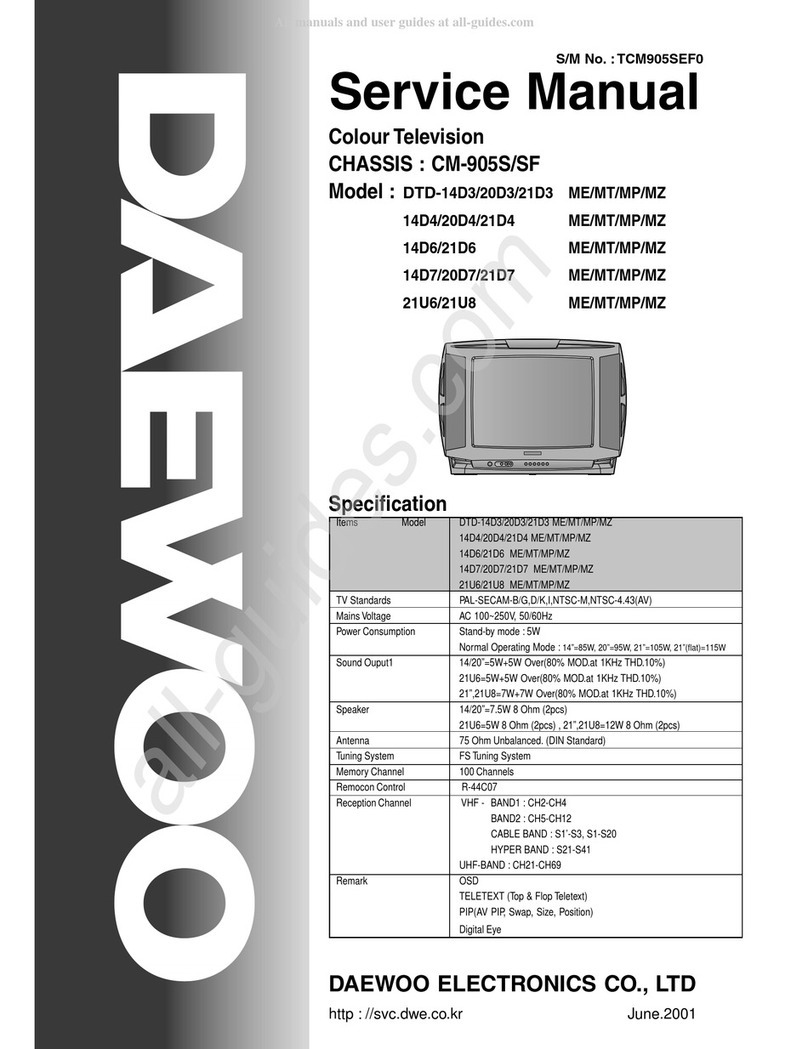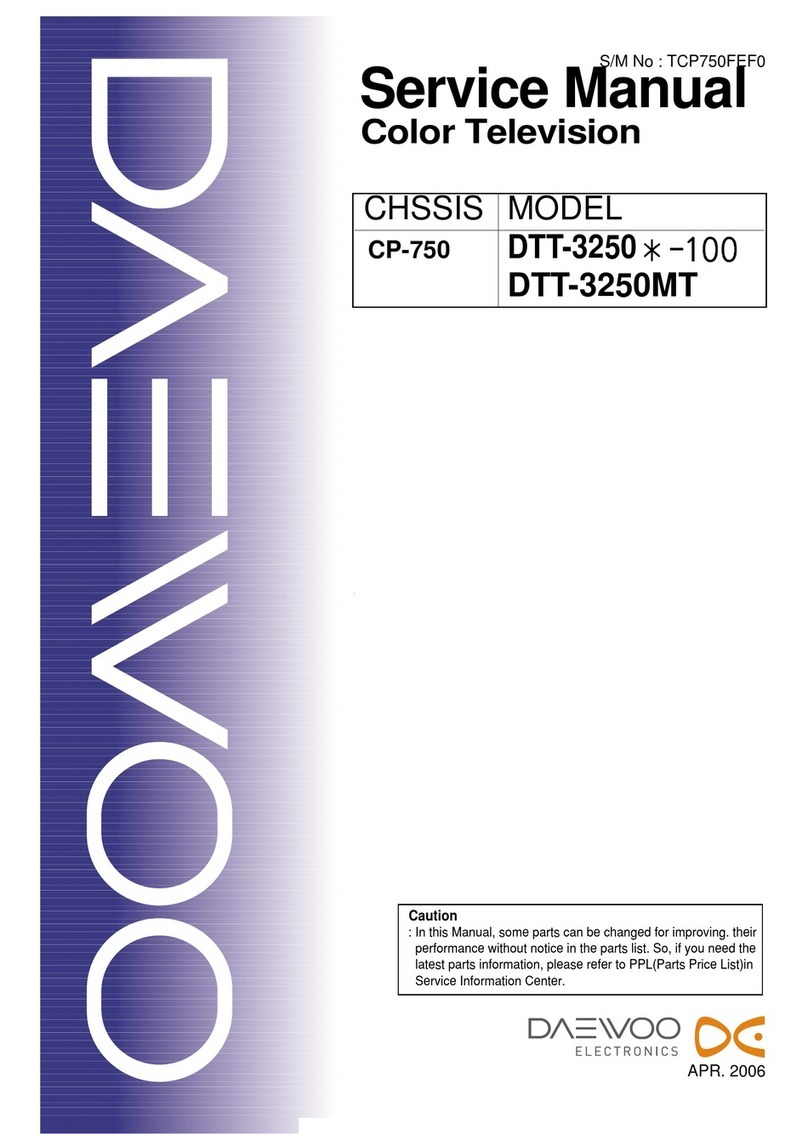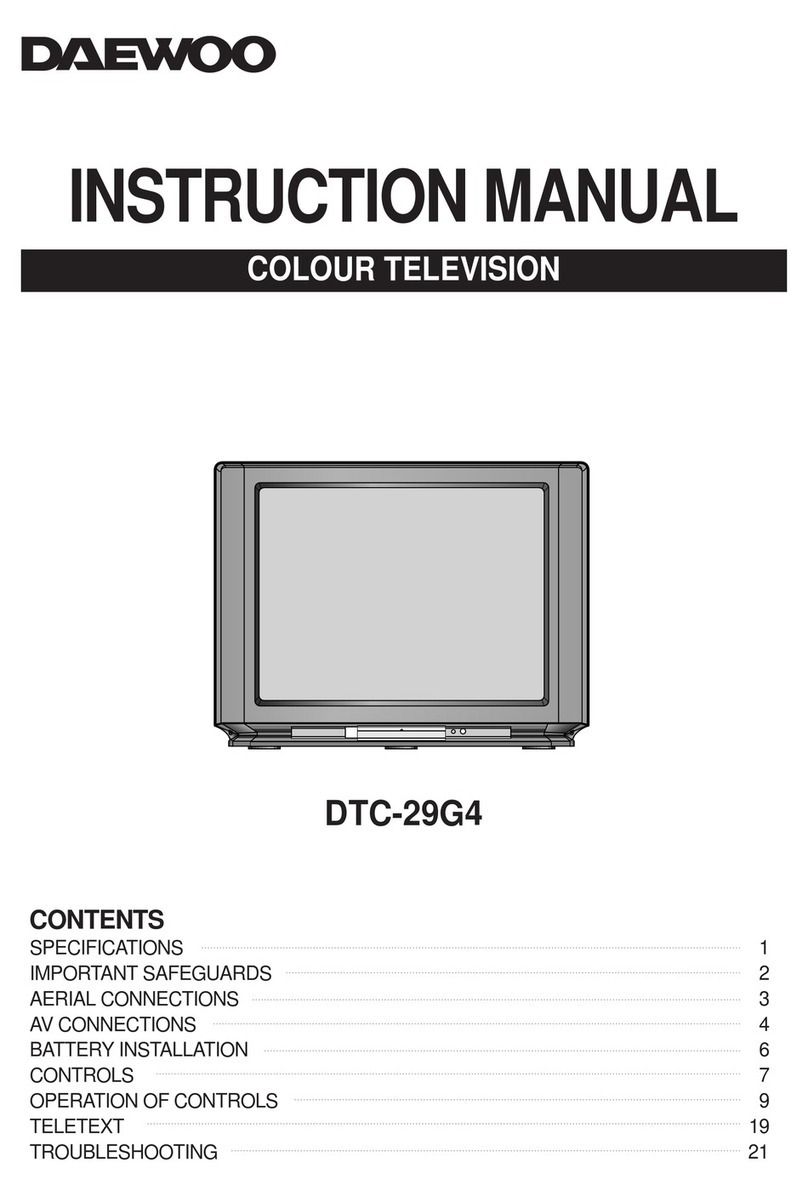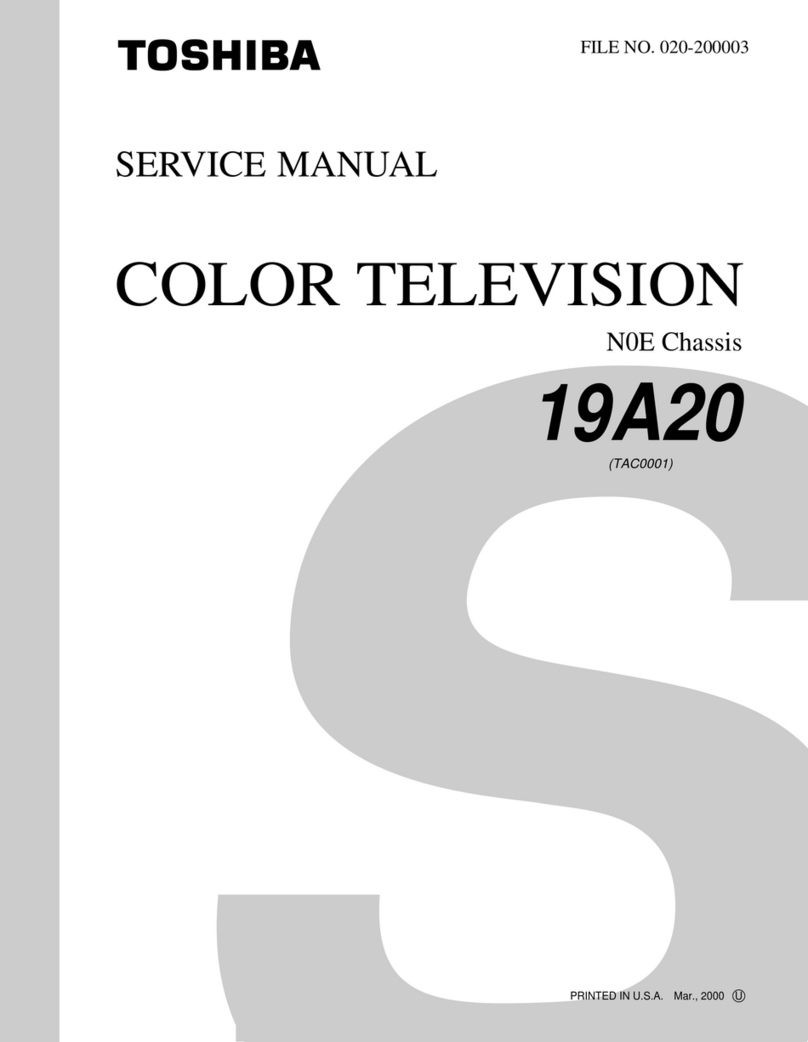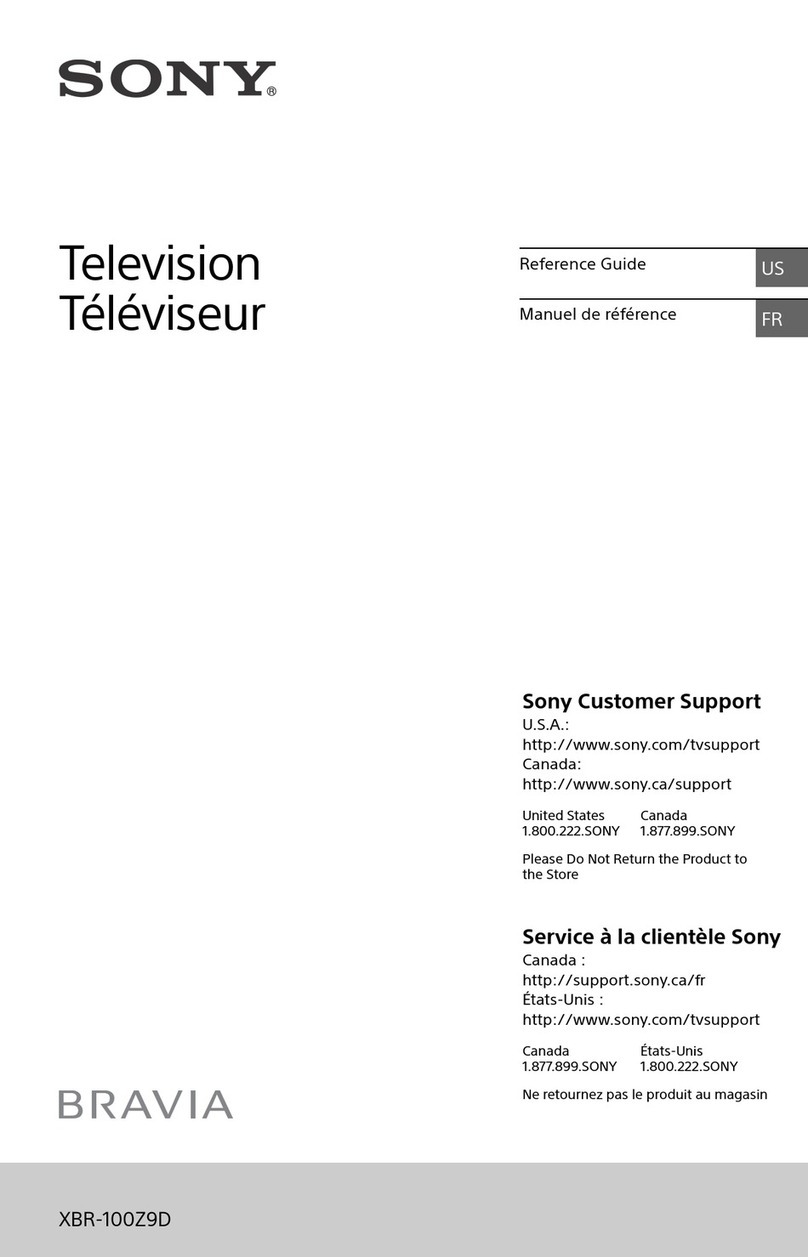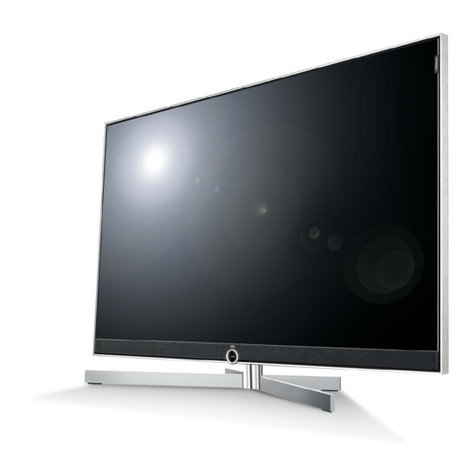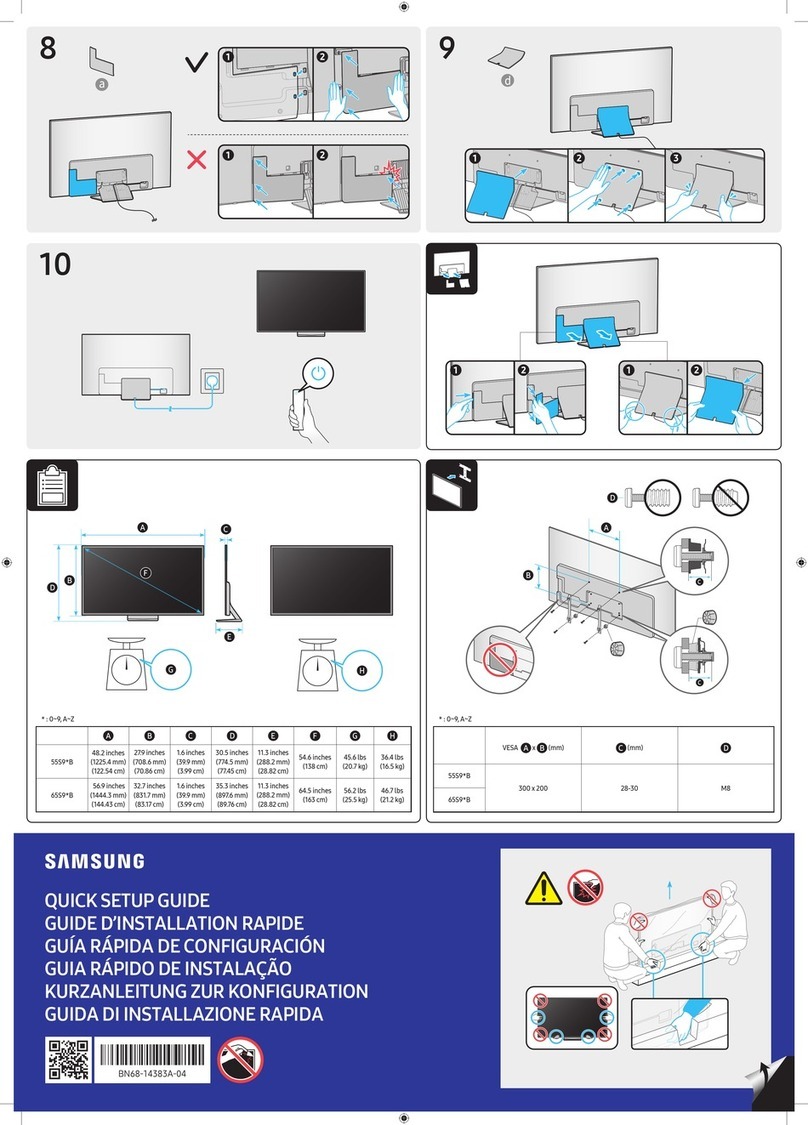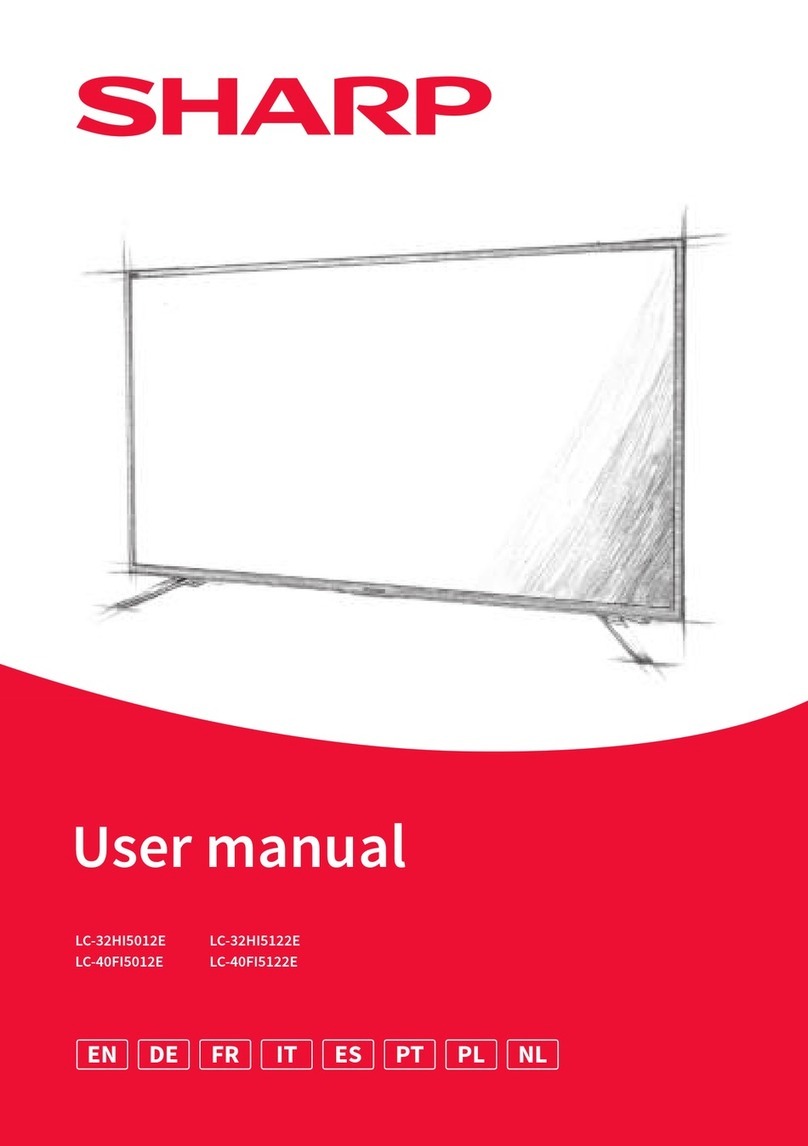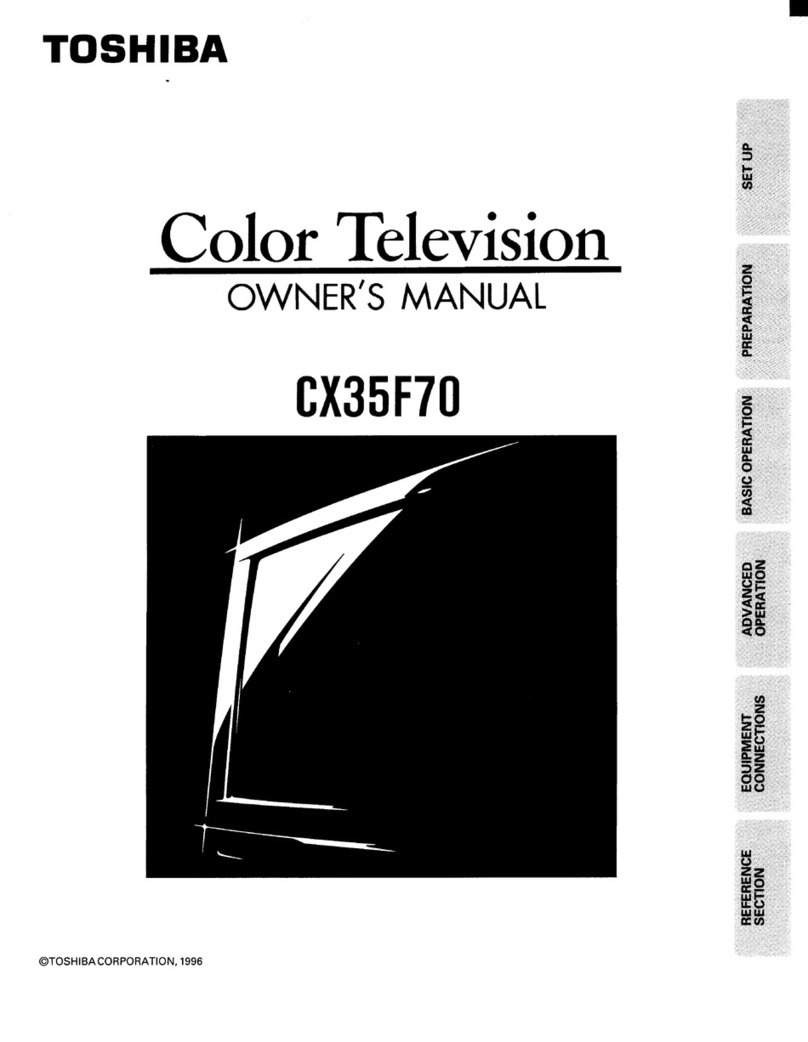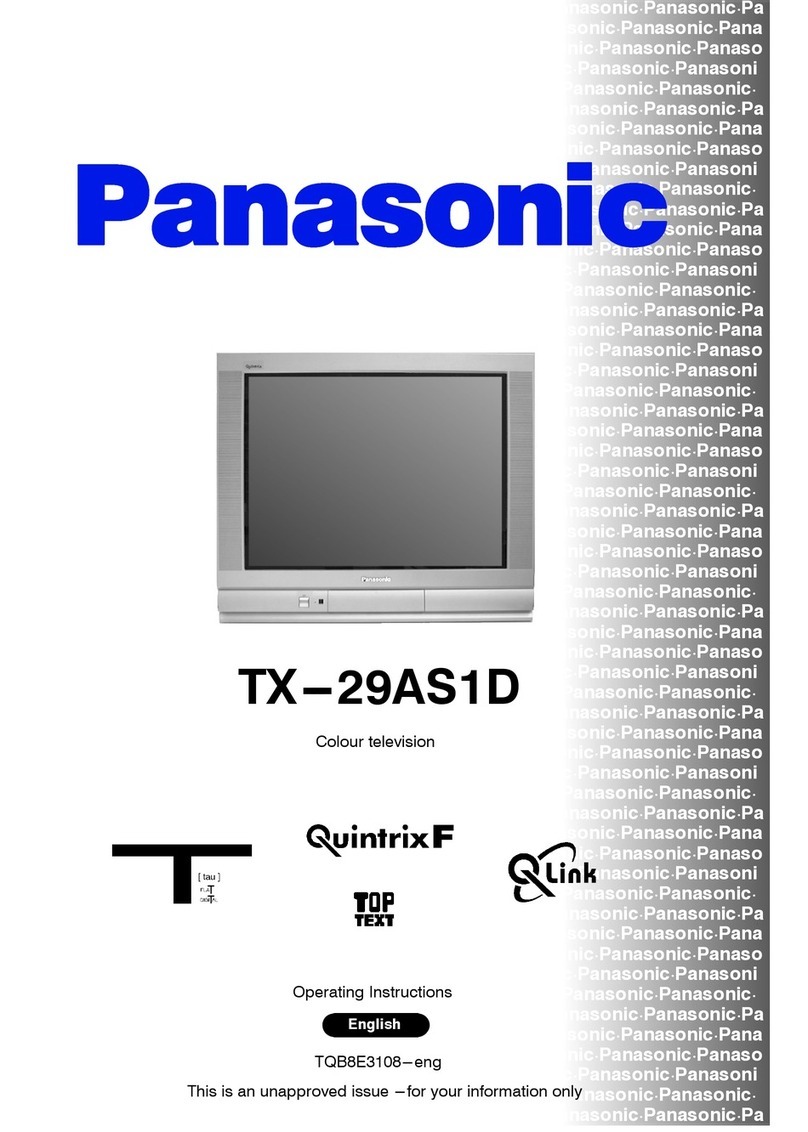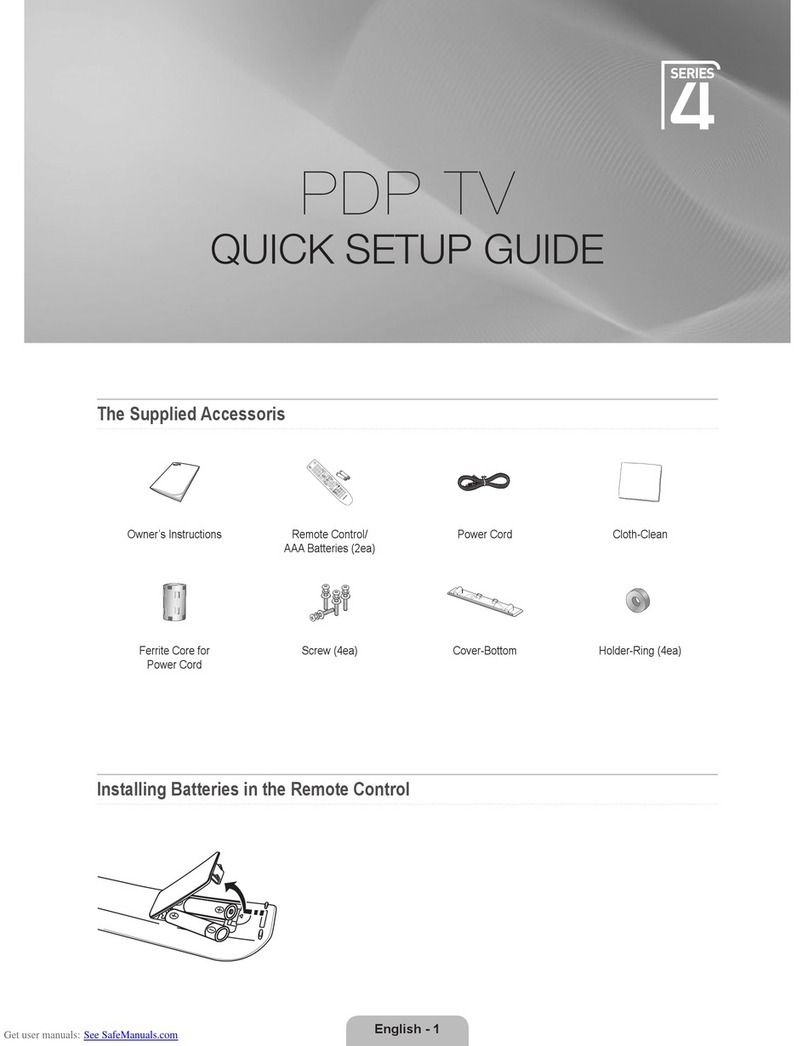1. X-RAY RADIATION PRECAUTION
1) Excessive high voltage can produce potentially
hazardous X-RAY RADIATION. To avoid such
hazards, the high voltage must not be above the
specified limit. The nominal value of the high voltage
of this receiver is 24.4kv(28.6kv) at zero beam current
(minimum brightness) under a 120V AC power source.
The high voltage must not, under any circumstances,
exceed 25kv (29kv). Each time a receiver requires
servicing, the high voltage should be checked following
the HIGH VOLTAGE CHECK procedure on page 7 of
this manual. It is recommended as a parts of the
service record. It is important to use an accurate and
reliable high voltage meter.
2)This receiver is equipped with X-RADIATION
PROTECTION circuit which prevents the receiver from
producing an excessively high voltage even if the
B+voltage increases abnormally. Each time the
receiver is serviced, X-RADIATION PROTECTION
circuit must be checked to determine that the circuit is
properly functioning, following the X-RADIATION
PROTECTION CIRCUIT CHECK procedure on page 7
of this manual.
3) The only source of X-RAY RADIATION in this TV
receiver is the picture tube. For continued X-RAY
RADIATION protection, the replacement tube must be
exactly the same type tube as specified in the parts list.
4) Some parts in this receiver have special safety-related
characteristics for X-RAY RADIATION protection. For
continued safety, parts replacement should be
undertaken only after referring to the PRODUCT
SAFETY NOTICE below.
2. SAFETY PRECAUTION
WARNING: Service should not be attempted by anyone
unfamiliar with the necessary precautions on this receiver.
The following are the necessary precautions to be
observed before servicing.
1) Since the chassis of this receiver has hazardous
potential to ground whenever the receiver is plugged in
(floating chassis), an isolation transformer must be
used during servicing to avoid shock hazard.
2) Always discharge the picture tube anode to the CRT
conductive coating before handling the picture tube.
The picture tube is highly evacuated and if broken,
glass fragments will be violently expelled. Use
shatterproof goggles and keep picture tube away from
the body while handling.
3) When placing a chassis in the cabinet, always be
certain that all the protective devices are put back in
place, such as; non-metallic control knobs, insulating
covers, shields, isolation resistor-capacitor network,
etc.
4) Before returning the set to the customer, always
perform an AC leakage current check to the exposed
metallic parts of the cabinet, such as antennas,
terminals, screwheads, metal overlays, control shafts
etc. to be sure the set is safe to operate without
danger of electrical shock.
Plug the AC line cord directly into a 120V AC outlet (do
not use a line isola-tion transformer during this check).
Use an AC voltmeter having 5000 ohms per volt or
more sensitivity in the following manner.
Connect at 1500 ohm 10 watt resistor, paralleled by a
0.15µF. AC type capacitor, between a known good
earth ground (water pipe, conduit etc.) and the
exposed metallic parts, one at a time. Measure the AC
voltage across the combination of 1500 ohm resistor
and 0.15µF capacitor. Voltage measured must not
exceed 0.3 volts RMS. This corresponds to 0.2
milliamp. AC. Any value exceeding this limit constitutes
a potential shock hazard and must be corrected
immediately.
3. PRODUCT SAFETY NOTICE
Many electrical and mechanical parts in this chassis have
special safety-related characteristics. These
characteristics are often passed unnoticed by a visual
inspection and the protection afforded by them cannot
necessarily be obtained by using replacement
components rated for higher voltage, wattage, etc.
Replacement parts which have these special safety
characteristics are identified in this manual and its
supplements; electrical components having such features
are identified by shading on the schematic diagram and
the parts list.
Before replacing any of these components, read the parts
list in this manual carefully. The use of substitute
replacement parts which do not have the same safety
characteristics as specified in the parts list may create X-
ray radiation or other hazards.
4. SERVICE NOTES
1) When replacing parts or circuit boards, clamp or bend
the lead wires to terminals before soldering.
2) When replacing a high wattage resistor (metal oxide
film resistor) in the circuit board, keep the resistor min
1/2 inch away from circuit board.
3) Keep wires away from high voltage or high
temperature components.
* Minimum brightness
4
IMPORTANT SERVICE NOTES
AC VOLT METER
Good earth ground
such as a water
pipe, conduit, etc.
Place this probe
on each exposed
metalic part.
0.15µF
1500 ohm
10watt
*
